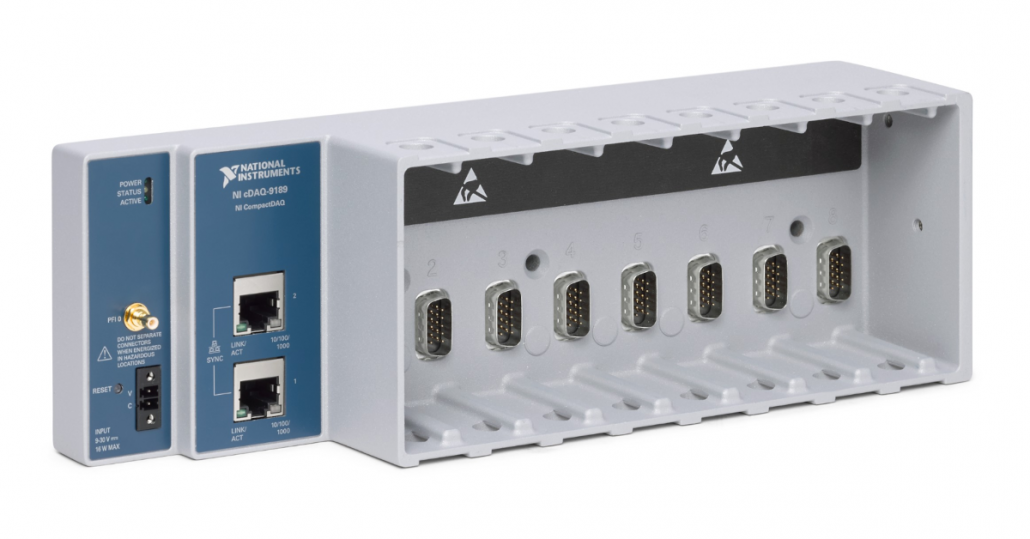Engineering Data Acquisition Tools: cDAQ-9189

When our engineers go on the road to troubleshoot structural component failures or machine vibration problems, they grab their laptop with iTestSystem installed and Pelican case containing an NI CompactDAQ (cDAQ) chassis and an assortment of C-Series modules, accelerometers, and strain gauges. The cDAQ chassis that they typically use is a cDAQ-9189 ethernet chassis, which is ideal for data logging.
The cDAQ-9189 is an extended temperature TSN enabled 8-Slot Ethernet chassis designed for distributed sensor measurement systems. The chassis controls the timing, synchronization, and data transfer between C Series I/O modules and your laptop. Since the chassis has an integrated network switch and is TSN enabled, measurements from multiple chassis are synchronized by simply daisy-chaining chassis with an ethernet cable.
For more information about the cDAQ-9189, DAQ hardware rentals or iTestSystem, contact Josh Fishback at (844) 837-8797 x705 to assist with your data collection needs.


